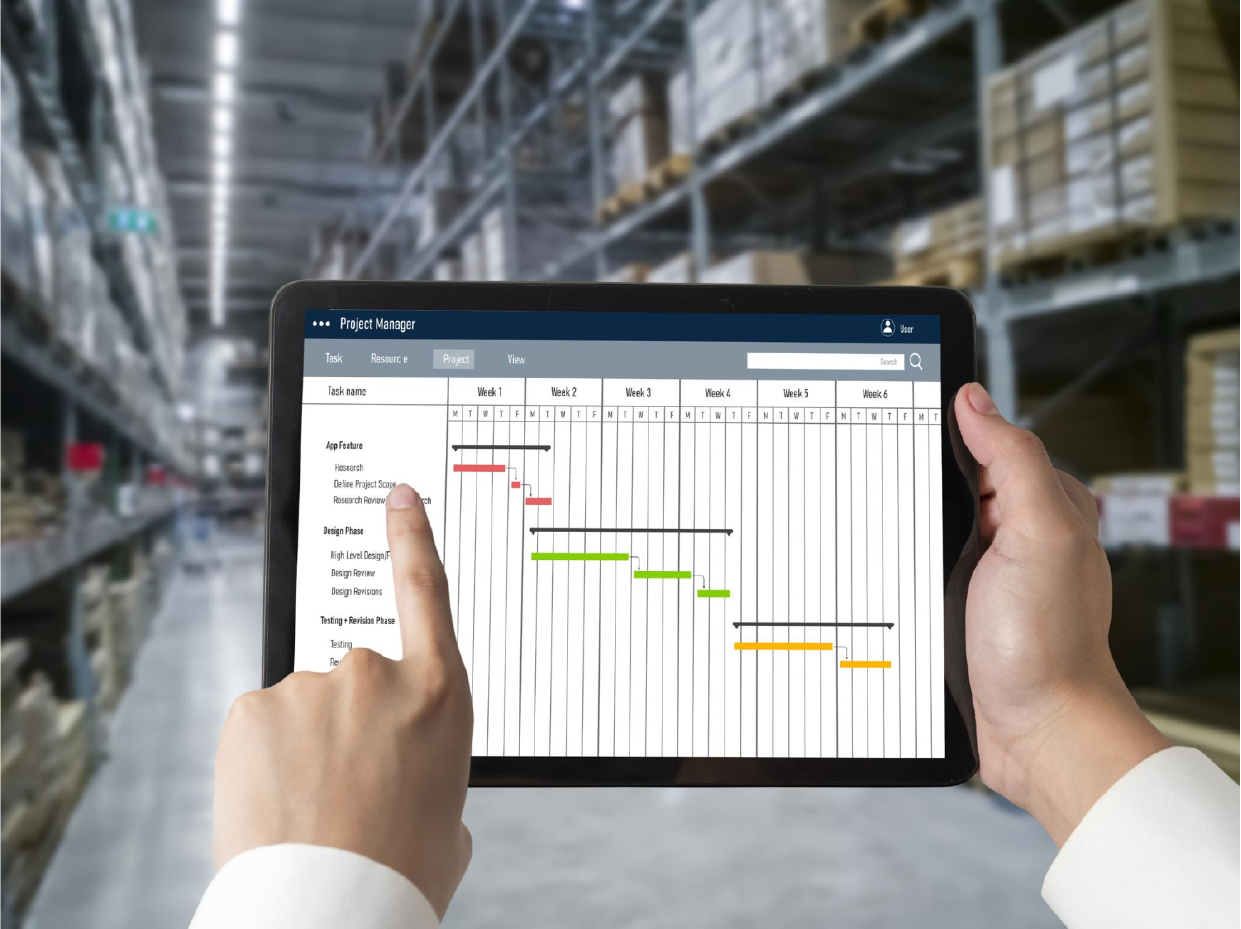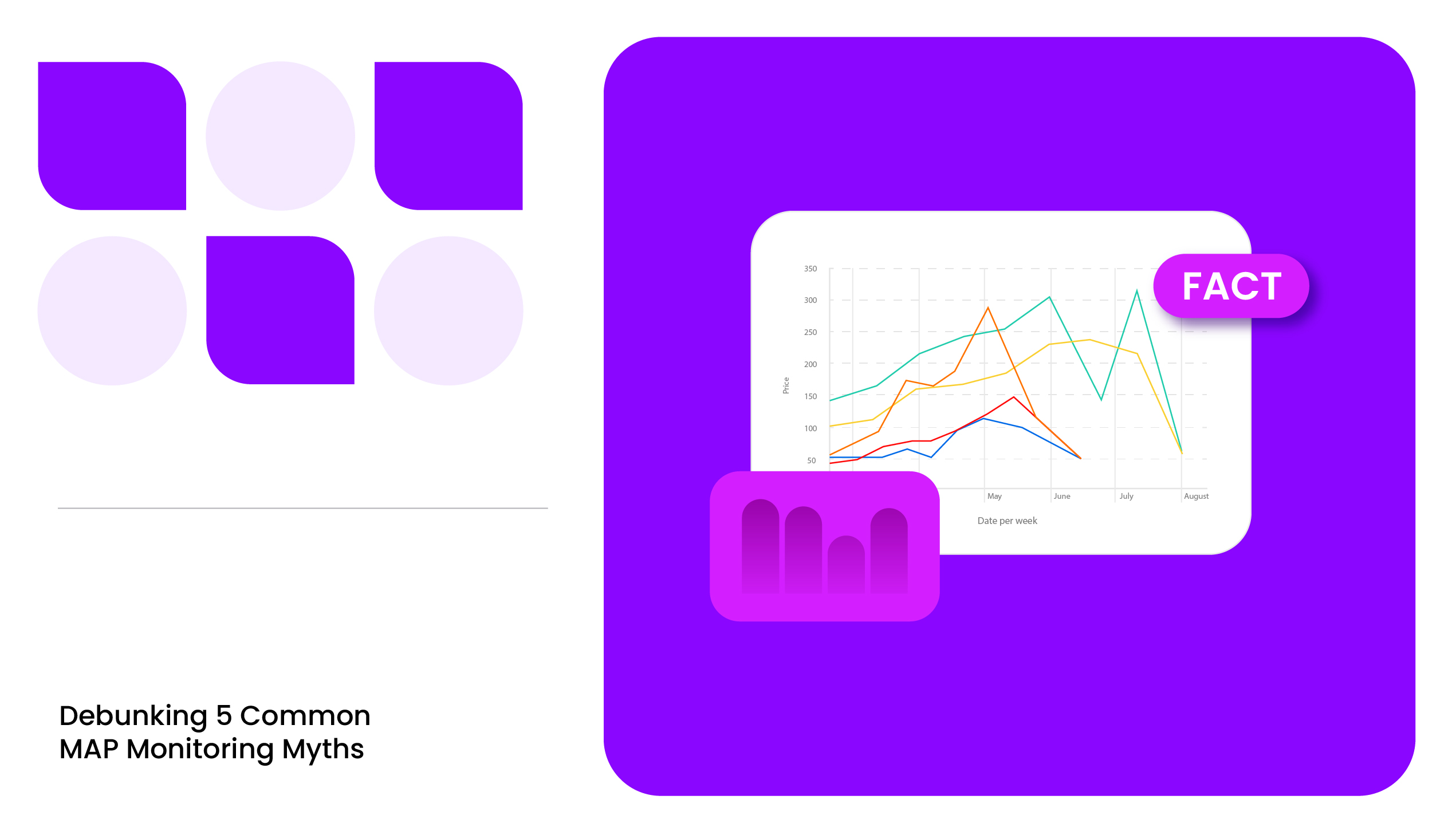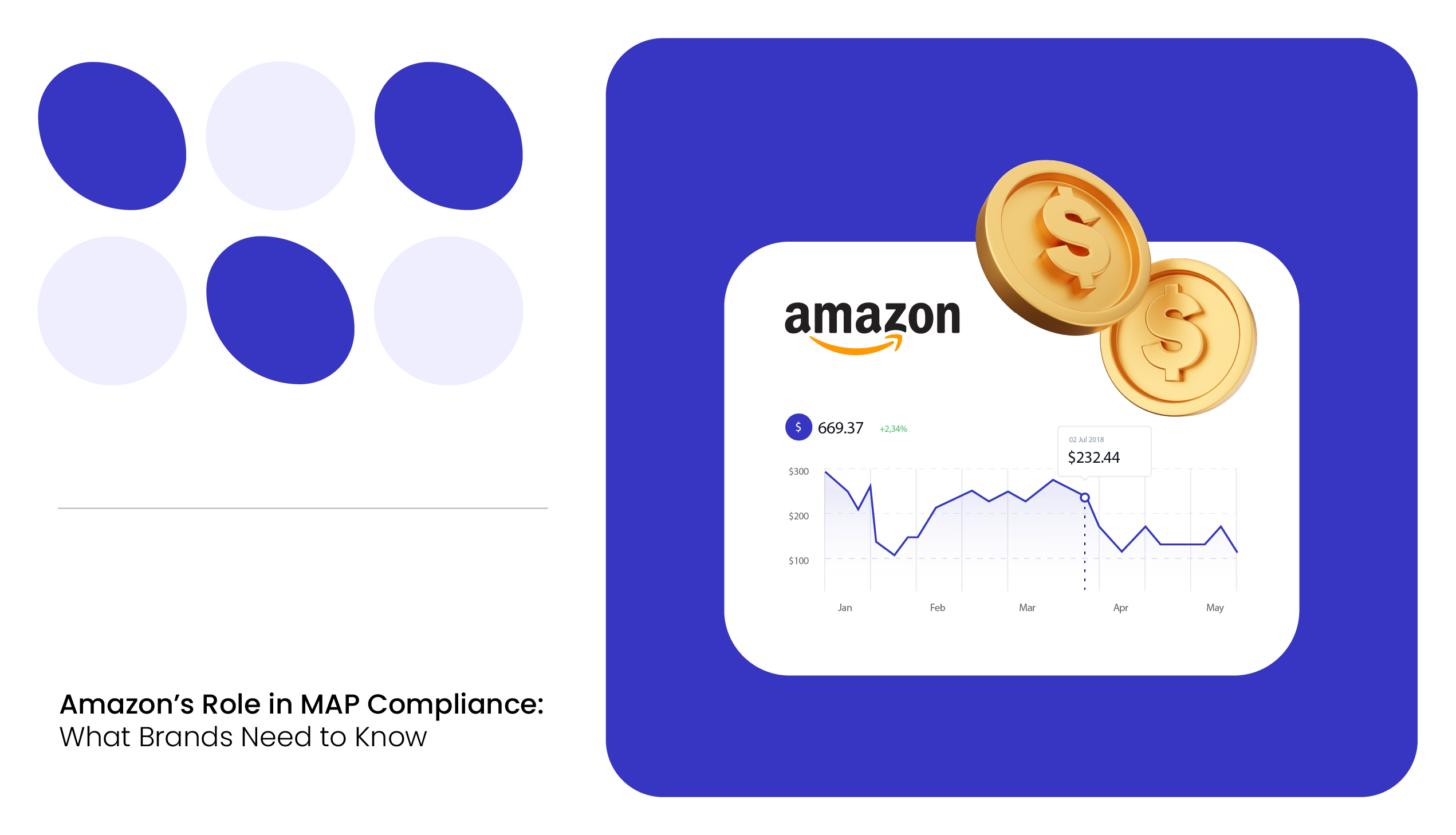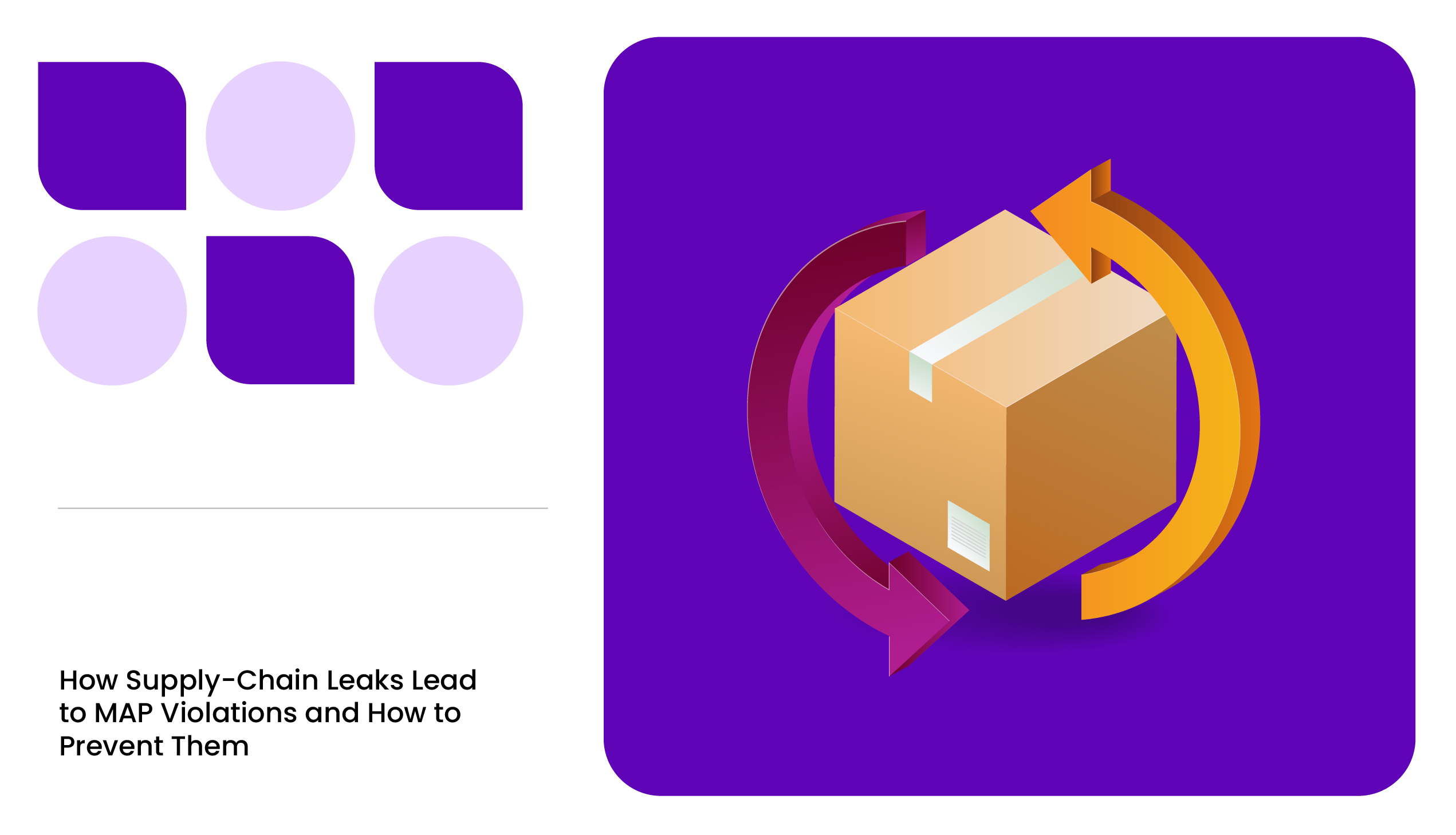Nike, the globally recognized brand, faced challenges with unauthorized sellers selling its products at prices below the Minimum Advertised Price (MAP). This not only threatened its brand value but also impacted the trust and cooperation it had with authorized retailers.
By implementing a robust e-commerce MAP monitoring strategy, Nike regained control over its unilateral pricing policies, ensuring that its products were consistently advertised at the appropriate price across all platforms.
This led to enhanced brand integrity, improved relationships with licensed sellers, and a boost in consumer trust.
Nike’s experience reminds us of the importance of MAP monitoring for brands and sellers. Prudent MAP monitoring offered by services like MetricsCart can safeguard brand value, maintain competitive pricing, and foster fair market practices.
What is MAP Monitoring?
Minimum Advertised Price (MAP) monitoring is the process of tracking sellers who advertise products below the prices recommended in a brand’s MAP policy.
While sellers may choose to sell the product at a lower price in-store or privately, they must adhere to the MAP policy when advertising online or in promotional materials.
READ MORE | What is the difference between MAP and MSRP? Check out our blog MSRP vs. MAP: Understanding Retail Price Terminologies.
Importance of MAP Price Monitoring
A well-defined MAP policy is the first step toward aligning the interests of brands and 3P sellers. From there on, the manufacturer becomes responsible for monitoring the minimum pricing agreed upon in the policy.
This step will ensure that every third-party seller involved in business with the brand advertises the product price within a standardized structure.
Implementing an efficient MAP monitoring software will ensure the following:
Protecting Brand Value
MAP pricing plays a vital role in protecting brand value by ensuring that products have a consistent identity throughout multiple retail channels.
When retailers or sellers advertise products below the MAP, it can lead to price erosion and diminish the brand’s perceived value.
By providing timely notifications on these map violations, brands can maintain their image as premium choices and prevent their products from being devalued.
Maintaining Competitive Pricing
Maintaining competitive pricing is crucial for brands seeking to attract and retain customers. MAP monitoring helps prevent unauthorized price reductions by ensuring that all retailers adhere to the brand’s pricing guidelines.
This level playing field encourages fair competition and prevents price wars that can harm brand and retailer profitability.
Ensuring Fair Selling Practices
Brands can identify and address instances of non-compliance, protecting authorized sellers from unfair competition.
This fosters strong relationships between brands and their retail partners, leading to more reliable distribution channels and improved customer experiences.
Benefits of MAP Monitoring for Brands and Sellers
Implementing MAP monitoring provides significant advantages for both brands and sellers, ensuring a more stable and equitable marketplace.
By ensuring MAP compliance, brands can maintain the integrity of their pricing strategy across various sales channels.
Here are some of the main benefits of MAP monitoring:
Improved Pricing Consistency
MAP monitoring ensures that products are consistently priced across all online channels. This consistency enhances the brand’s credibility and reassures customers that they are getting a fair deal.
Improved pricing also prevents customer confusion and frustration, contributing to a positive shopping experience.
Enhanced Brand Control
By monitoring and enforcing MAP policies, brands gain greater control over how their products are presented to consumers, leading to better brand protection overall.
This control extends to authorized retailers and sellers, preventing unauthorized price reductions that can harm the brand’s image and profitability.
Increased Sales and Profitability
Maintaining consistent pricing through MAP monitoring can lead to increased sales and profitability.
When customers perceive a brand as trustworthy and reliable, they are more likely to make purchasing decisions based on value rather than solely on price.
This shift in consumer behavior can result in higher sales volumes and improved profit margins.

How Can E-Commerce Sellers Effectively Monitor MAP?
When selecting a MAP monitoring service, brands should consider features such as real-time data collection, automated alerts, customizable reports, and integration with existing systems.
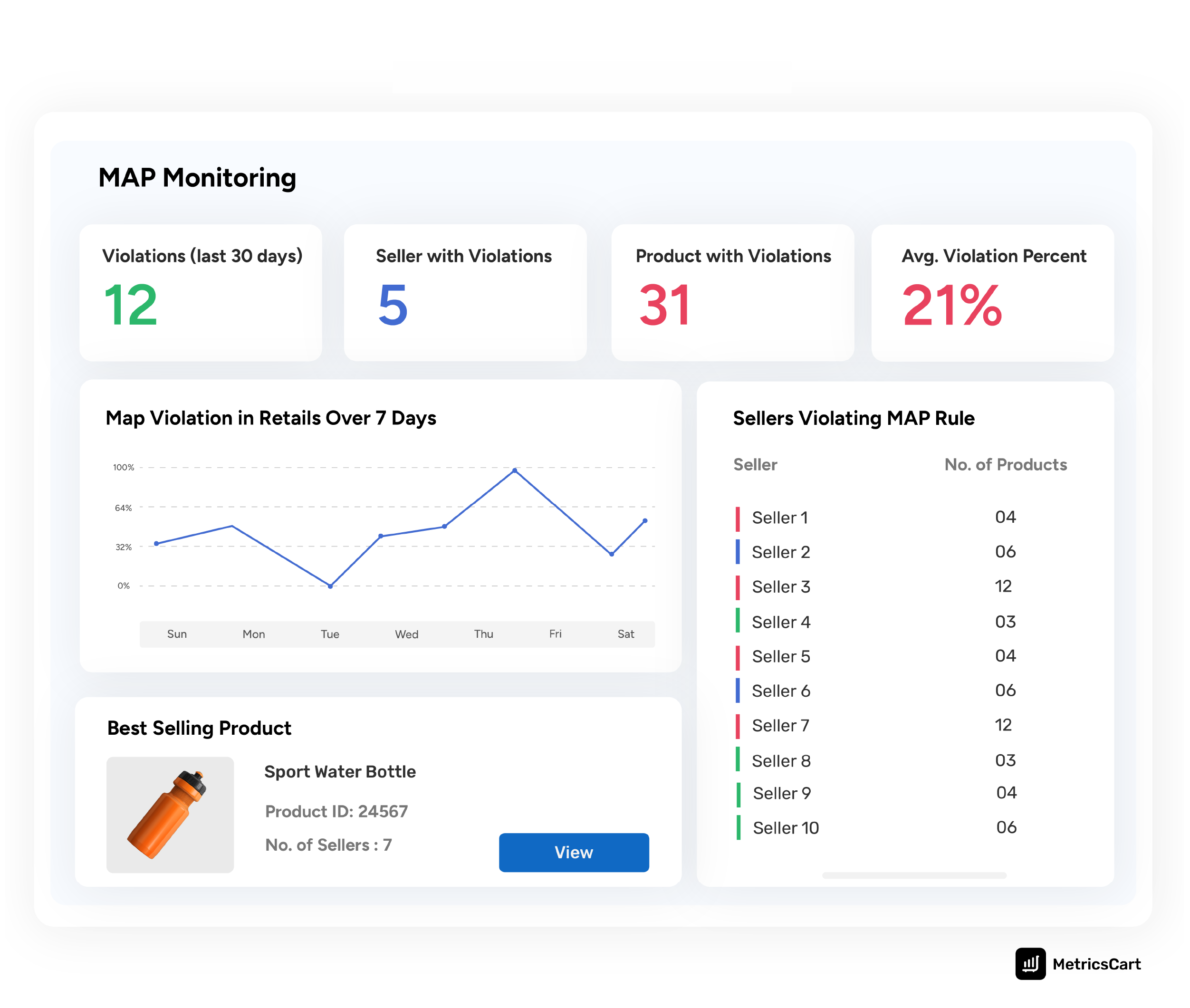
MAP monitoring by a third-party solution like MetricsCart assists brands in keeping track of MAP prices across multiple platforms and identifying violations by sellers in real-time.
Here are some of the things to keep in mind while choosing a MAP monitoring software:
Technologies Used
MAP monitoring relies on advanced technologies to track and analyze pricing data across multiple online platforms. These technologies include web scraping tools, artificial intelligence, and data analytics.
Web scraping allows brands to collect real-time data from e-commerce websites, ensuring accurate and up-to-date pricing information.
Methodologies and Best Practices
Effective MAP monitoring involves several key methodologies and best practices.
Brands must establish clear MAP policies, communicate these policies to sellers, and define consequences for non-compliance.
Regular monitoring, coupled with automated alerts, helps brands identify violations promptly and take corrective action.
Data Collection and Analysis
Brands gather pricing data from various sources, including e-commerce platforms, marketplaces, and price comparison websites.
Digital shelf solutions like MetricsCart analyze these data to identify pricing trends, violations, and patterns of non-compliance.
Brands can leverage this information to make informed decisions and adjust their pricing strategies accordingly.
Evaluating Costs and ROI
Evaluating the costs and potential return on investment (ROI) of a MAP monitoring service is essential.
Brands should assess the value that the service provides in terms of pricing consistency, brand protection, and increased sales.
A well-chosen service can deliver significant ROI by safeguarding the brand’s pricing strategy and market positioning.
READ MORE | Confused about which MAP monitoring software to use? Check out our blog on Best MAP Monitoring Software You Should Consider for E-Commerce
Conclusion: MetricsCart Does It Right
In today’s competitive e-commerce landscape, maintaining control over how your products are priced and presented is essential for brand success.
Most 1P sellers and brands lose Buy Boxes on platforms like Amazon because they have yet to realize the importance of a MAP monitoring tool fully.
Most of the time, this leads to:
- Long and wasted hours on manual monitoring
- Inaccurate data and reports leading to pricing missteps
- Late tracking that gives leverage to unauthorized sellers
MetricsCart offers hassle-free MAP monitoring that helps brands protect their pricing integrity and maintain brand value across online platforms.
Some of the significant benefits offered by MetricsCart are:
- Automated alerts on violations by sellers
- Advanced algorithms that monitor in real-time across multiple platforms
- Customizable monitoring capabilities according to brand policies
- Flawless integration with existing brand eco-systems
Get on a discovery call with us and forget your MAP policy woes.
Empower Your Brand Against Pricing Violations!

